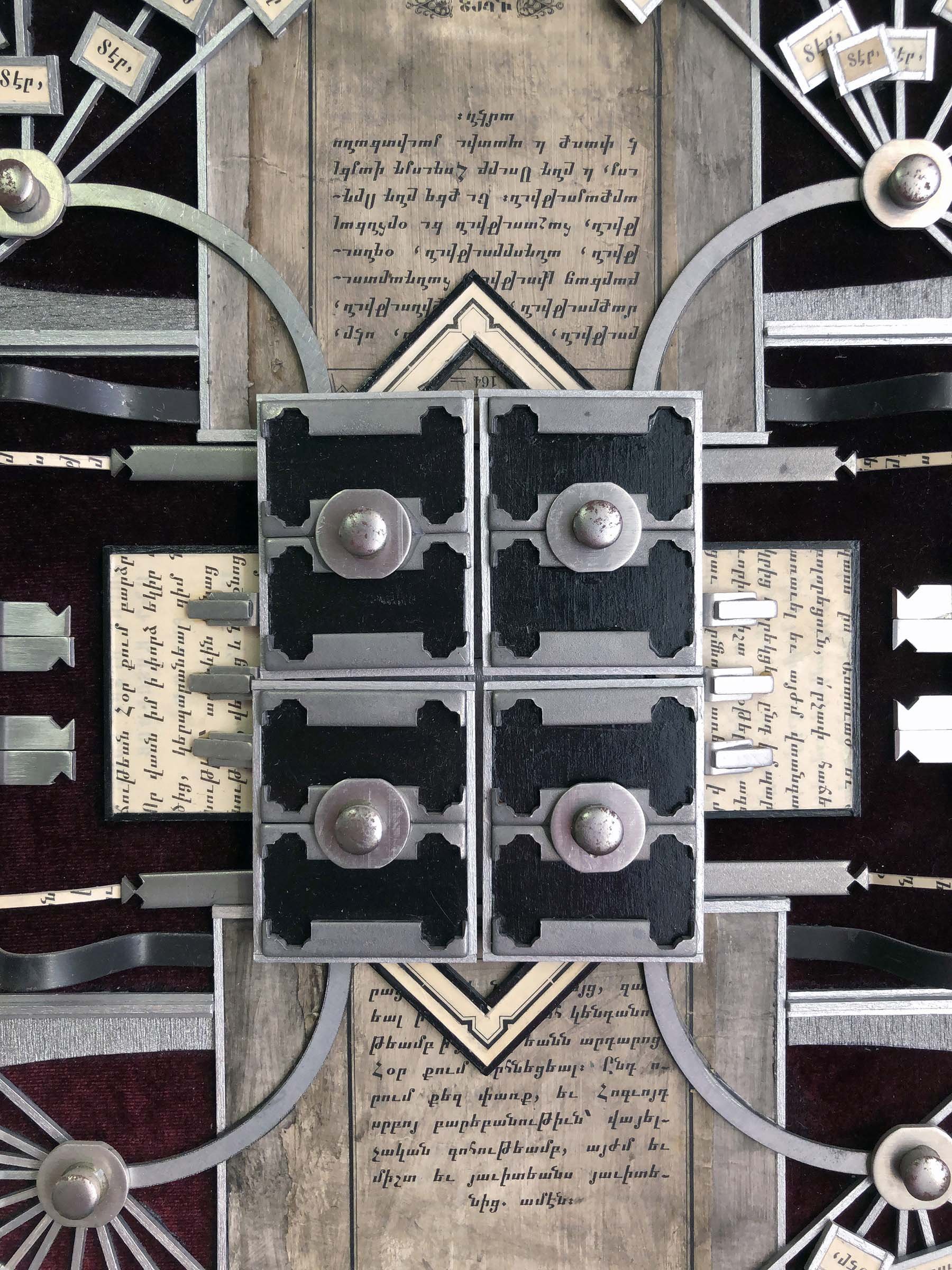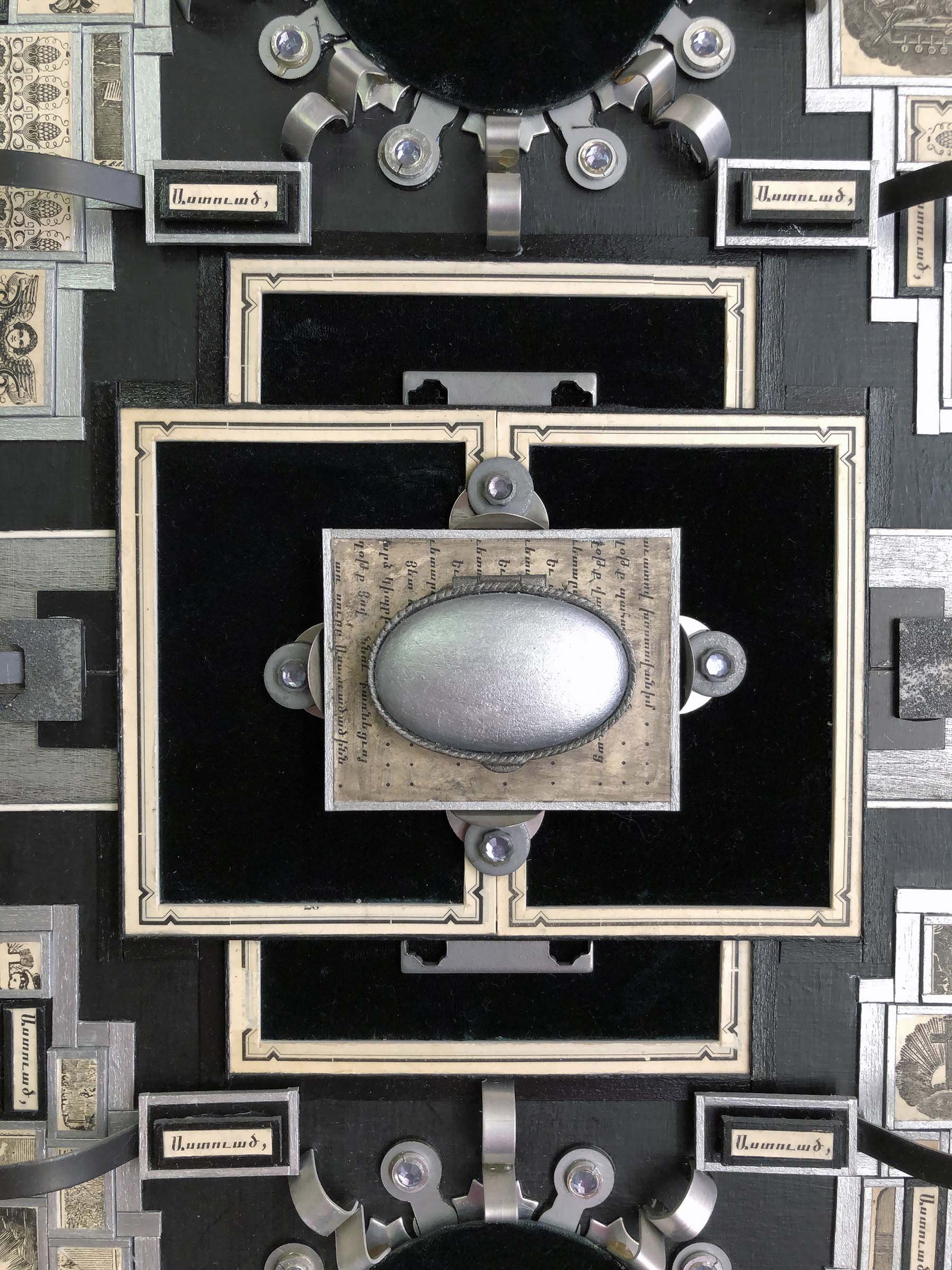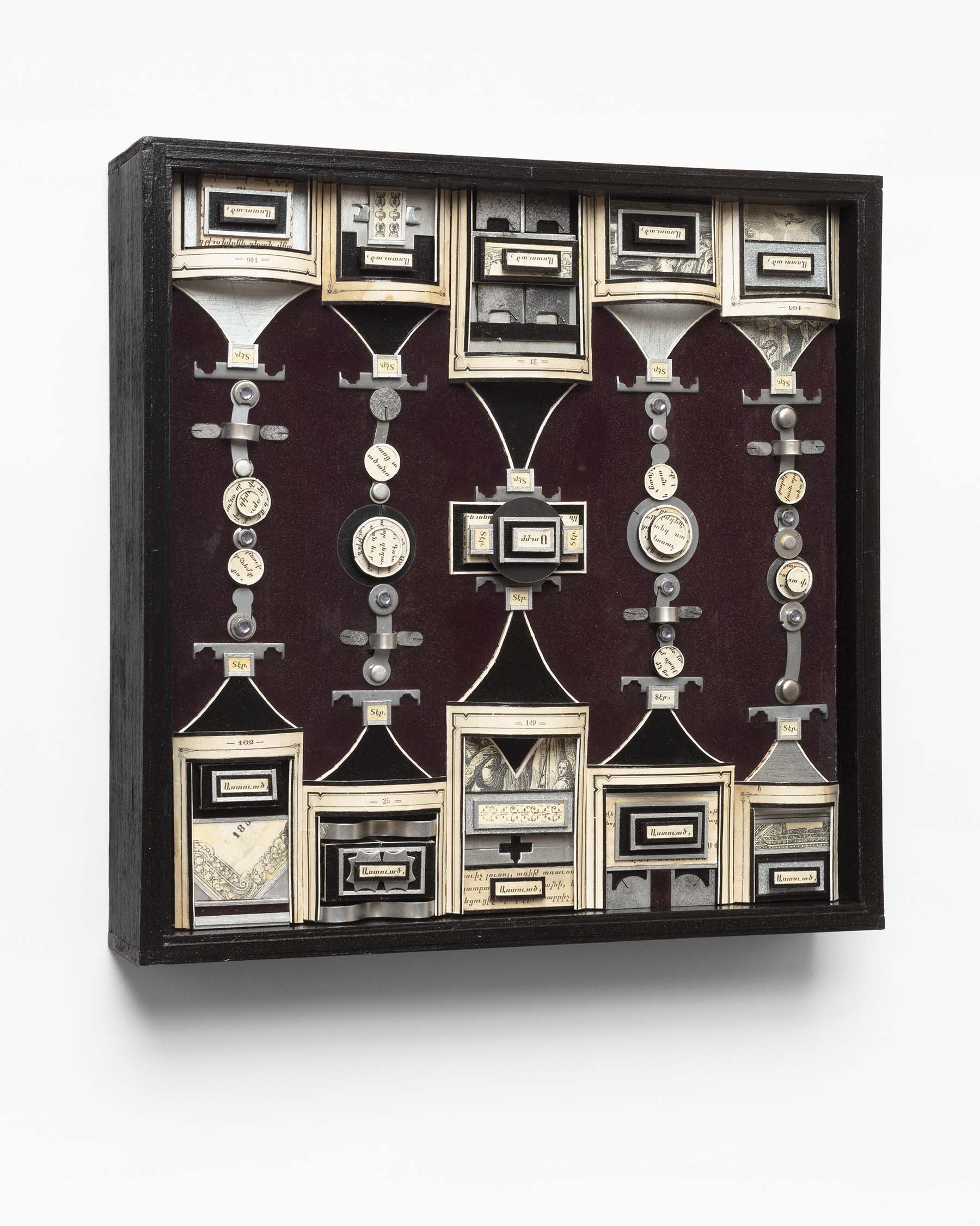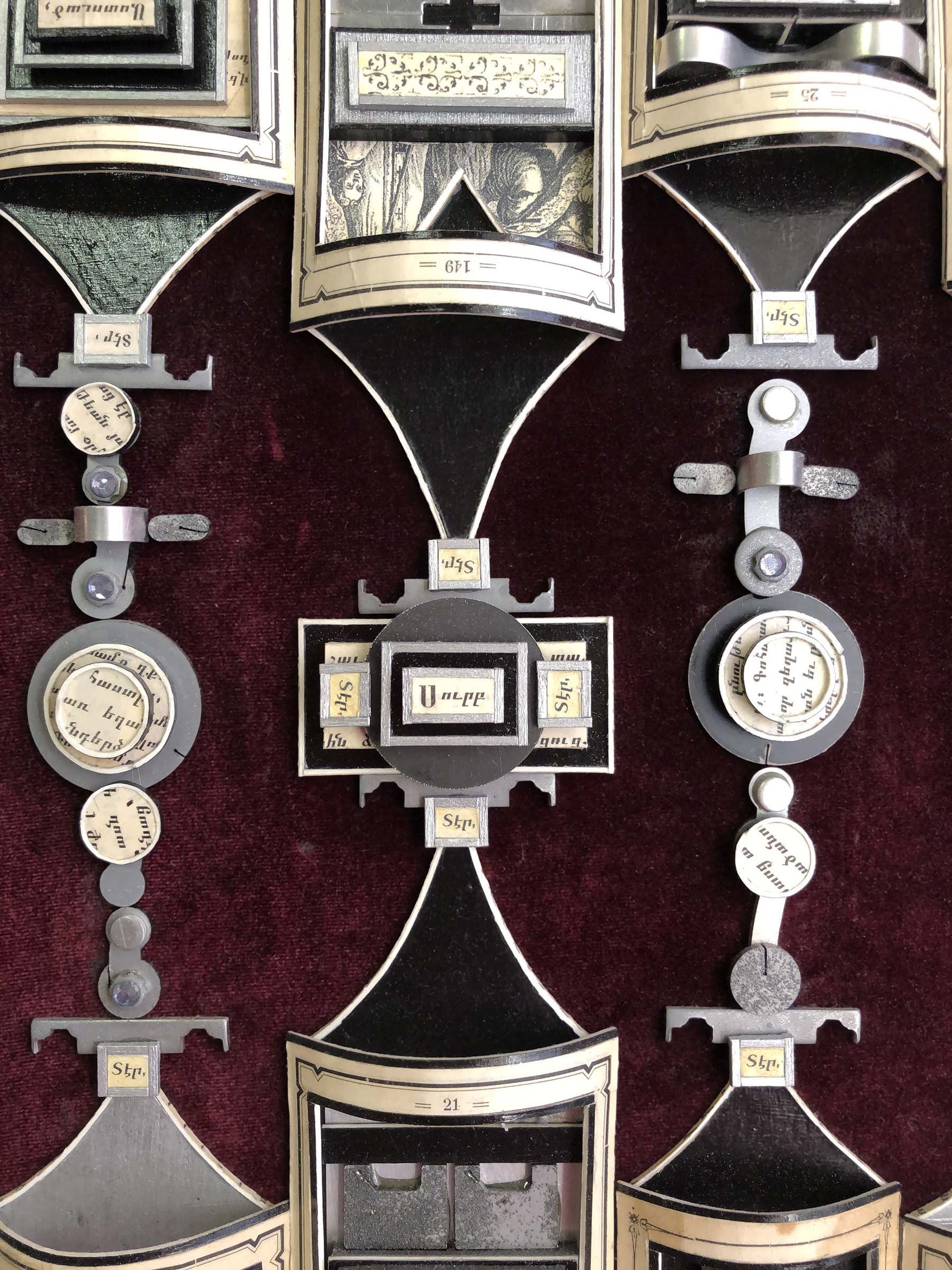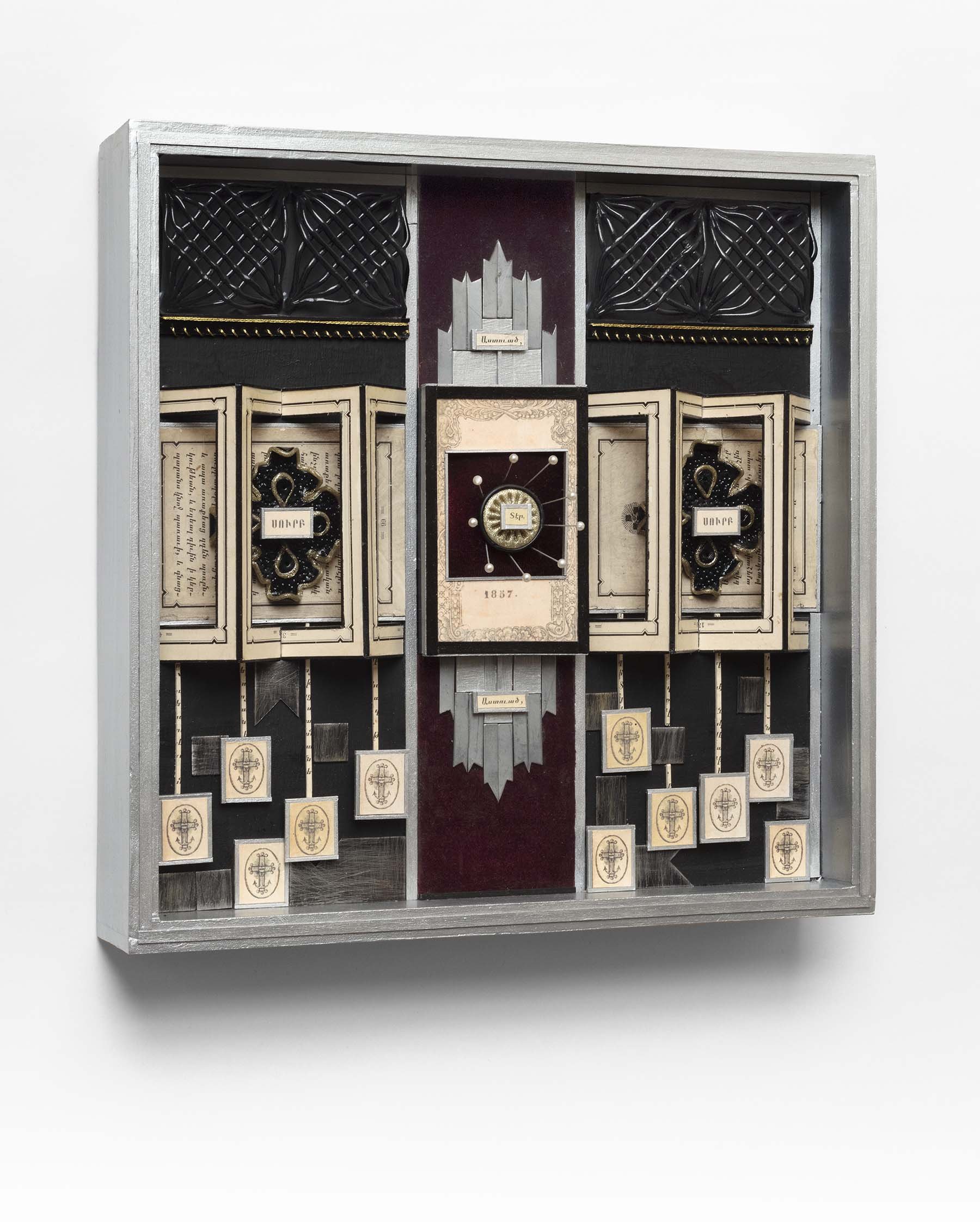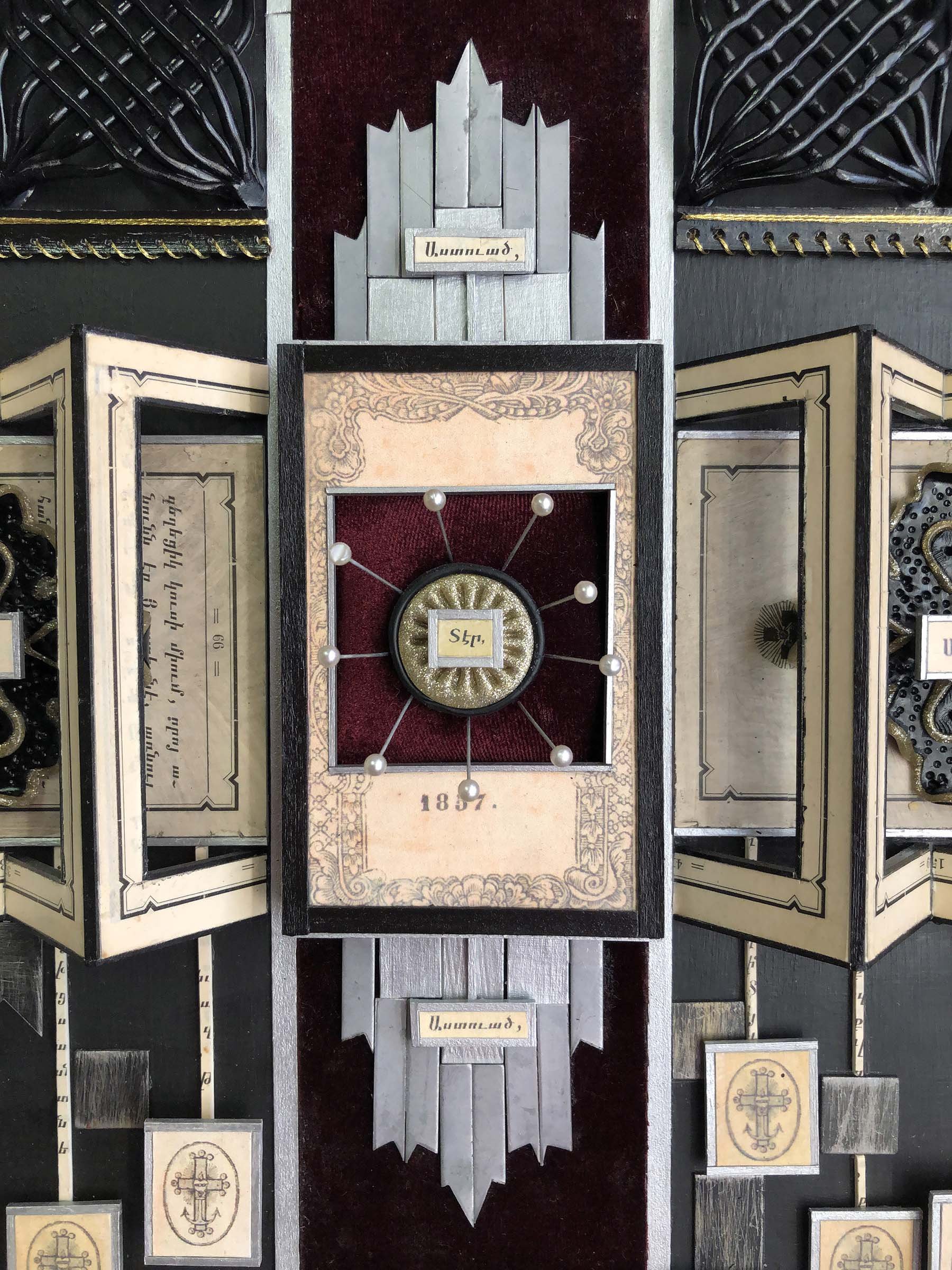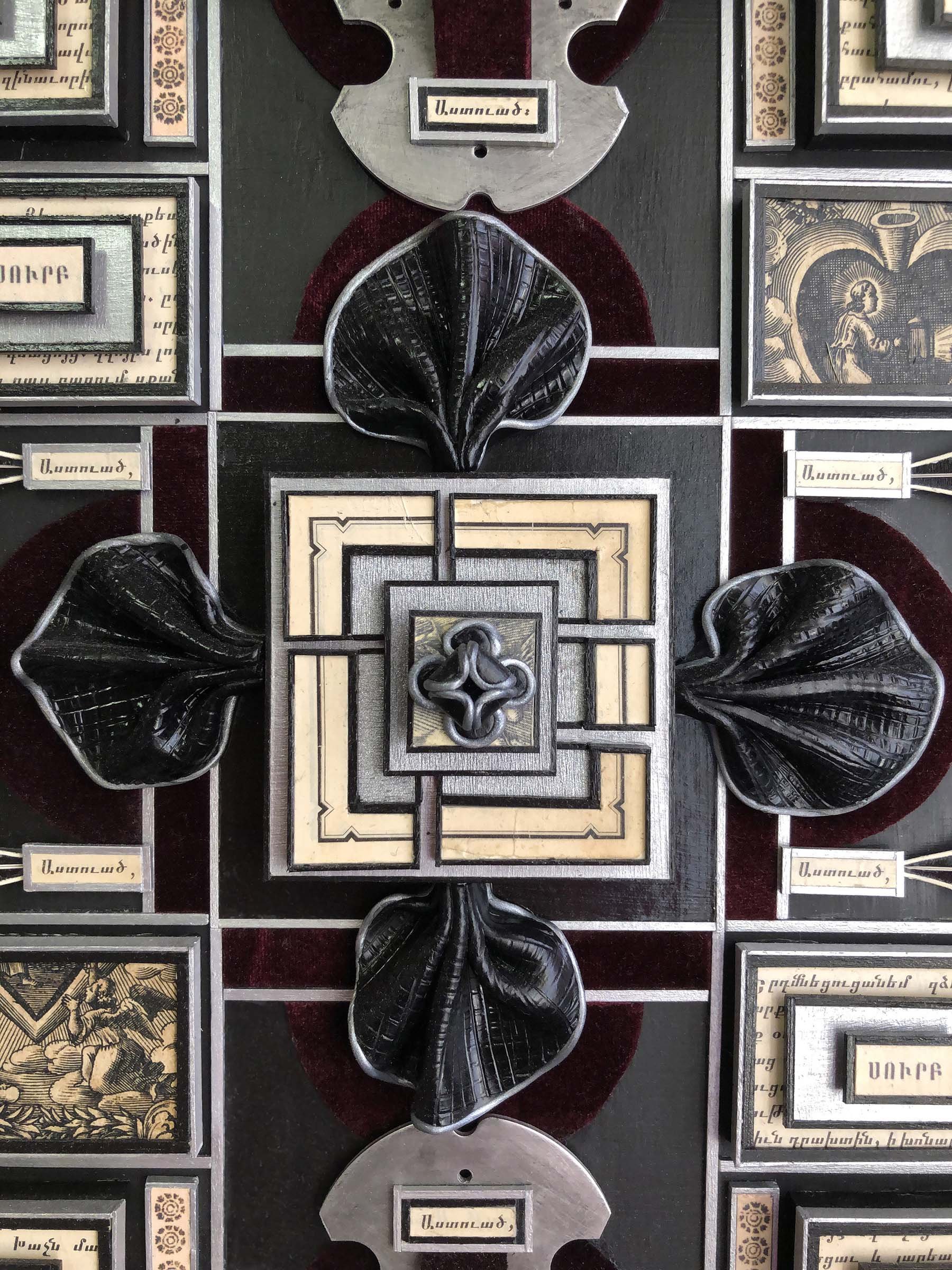This series of six sculptural reliefs, titled Map of Her Prayers, was made after the death of my grandmother in 2017 and serves as a memorial to her. There are four things to know about her: she was an Armenian immigrant from Istanbul who emigrated to Massachusetts in the 1980s; she was fiercely devout; she was a talented seamstress; and she had a collection of prayer books that she would often read from. After her death, I inherited a couple of these books.
This work was partly inspired by medieval reliquaries, in the Eastern Orthodox tradition, known for their ornate decorative details and their devotional appeal. In my reliefs, I’ve incorporated reproductions of imagery from the prayer books, as well as certain words: “Lord,” “God,” and “Holy” (in Armenian). As I contemplate the placement of words within these compositions, I feel like I am mapping out a prayer in her honor—the repetition of words like a spiritual incantation.
The other elements in the reliefs complete my portrait of her. I collected metal scraps from a local lighting factory, which I employed as ornamental flourishes, but they also reminded me of the metal hardware connected to her vocation: the old Singer machine with its steel parts, the bobbins, thimbles, and other tools. It also seemed fitting to include some sewing pins and velvet scraps. For what could not be found, I modeled small clay elements to represent plaited fabric and trim and sewing notions.
Through composing and constructing, cutting and gluing, I invent a sacred landscape as a way to channel my grief—creation as an antidote to loss. One of the reliefs, Map of Her Prayers #3, actually contains her worry beads in the central compartment. Touching the objects she had once touched transports me across the divide between us.
—Linda Ganjian
Map of Her Prayers #1, #2, #4, #5, #6: mixed media (metal pieces, board, paint, vintage prayer book, plastic jewels, velvet on wood), 13'' x 13'' x 4'', 2019. Map of Her Prayers #3: mixed media (metal pieces, board, paint, vintage prayer book, plastic jewels, velvet, prayer beads in pill capsule, on wood), 13'' x 13'' x 4'', 2019.
From top to bottom: Map of Her Prayers #1, Map of Her Prayers #1 (detail), Map of Her Prayers #2, Map of Her Prayers #2 (detail), Map of Her Prayers #3, Map of Her Prayers #3 (detail), Map of Her Prayers #4, Map of Her Prayers #4 (detail), Map of Her Prayers #5, Map of Her Prayers #5 (detail), Map of Her Prayers #6, Map of Her Prayers #6 (detail).


